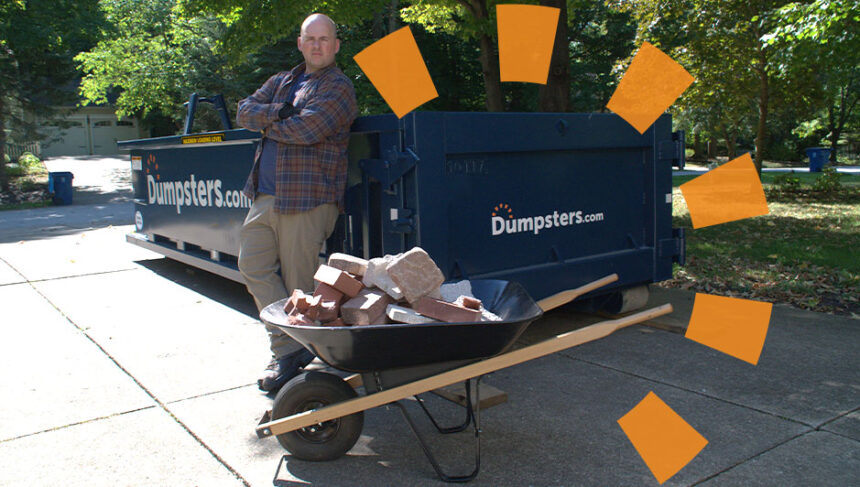Starting a cleanup project can be daunting because of the many aspects you must consider, but selecting the appropriate dumpster size can significantly ease the process. Whether tackling a home renovation brimming with old furniture and flooring or organizing a community event with tons of recyclable materials, selecting the correct dumpster is crucial.
When considering a Tarboro dumpster rental, you want a solution that streamlines the process and avoids unnecessary costs or logistical headaches. Choosing the wrong size could lead to problems such as needing additional pickups or violating local disposal regulations. By assessing your project’s requirements and estimating your waste volume accurately, you can ensure that you choose the right fit, enhancing efficiency and managing expenses wisely while being environmentally conscious.
Understanding Dumpster Sizes
Dumpsters come in different sizes, each tailored to meet specific project needs and waste volumes. For instance, a 10-yard dumpster is typically intended for smaller tasks like clearing out garages or managing a limited amount of landscaping debris. Its diminutive dimensions allow it to be placed in narrow locations, making it especially advantageous in city environments. On the other end of the spectrum, the massive 40-yard container is your go-to for significant construction undertakings where you’ll generate substantial waste like concrete or extensive demolition debris. Understanding these distinctions helps you avoid overpaying and ensures you don’t underestimate your capacity needs. Familiarizing yourself with these options simplifies your decision-making process and can ultimately lead to significant cost savings and increased project efficiency.
Choosing Based on Project Type
The nature of your project directly impacts the dumpster size you should choose. Smaller projects like attic cleanouts or deck removals typically necessitate a 10 to 20-yard dumpster, which can comfortably hold lighter debris. For medium renovations involving bathroom upgrades or basement overhauls, a 20- to 30-yard dumpster is more suitable, as these projects produce considerable waste. Engaging with services like a Rocky Mount dumpster rental provides valuable insights tailored to your requirements and geographic location. These services can advise you on local regulations and conditions that might affect your choice, ensuring that your project is compliant and effective.
Estimating Waste Volume
Accurate waste volume estimation is a cornerstone of efficient dumpster rental. Many online resources offer tools that act as waste calculators, allowing you to estimate materials ranging from old furniture and garden waste to drywall and roofing materials. It’s essential to take a comprehensive inventory of your intended waste and cross-refer this with online estimates for precise calculations. Consulting with dumpster rental professionals can also provide personalized insights, enhancing the accuracy of your estimates. For exact calculations, reach out to experts or use online calculators that consider nuances such as debris density and type, ensuring your project is set up for success from the start.
Practical Tips for Choosing the Right Size
- Begin by visualizing the entire project timeline and potential modifications along the way. Anticipating changes and expansions in scope is critical.
- Leverage advice from professionals who have managed similar projects and are familiar with local disposal challenges.
- Evaluate your available space for dumpster placement to prevent access or logistical issues. Consider permit requirements or restricted areas.
Cost Considerations
Choosing an appropriate dumpster size is crucial for capacity and budget management. Opting for a slightly larger size might seem pricier initially, but it could prevent overages from an overfilled container, which incurs charges and necessitates additional pickups. Aim for a balance that neither overestimates nor underestimates your dumpster needs when possible. By comprehending the fixed and variable expenses related to dumpster rentals, you can make a financially prudent choice that fits within your project’s budget.
Environmental Impact
Choosing the right dumpster size contributes significantly to sustainable waste management practices. By selecting an appropriately sized dumpster, you minimize unnecessary trips, each reduction saving fuel and lessening pollution. Moreover, partnering with local providers committed to eco-friendly disposal practices enhances your project’s environmental profile. Such providers adhere to stringent disposal regulations and engage in recycling initiatives, promoting responsible waste management practices. Advocating for such practices ensures waste is managed correctly and sustainably, supporting a healthier ecosystem.
Final Thoughts
Understanding your project’s specific needs, accurately estimating waste, and maintaining a balance between cost and efficiency is the key to an effective dumpster rental experience. Proper planning eases the cleanup process and aligns with environmentally conscious practices. By following these guidelines and consulting with experts, you’ll ensure the success of your next cleanup project while also safeguarding your environmental commitments.






